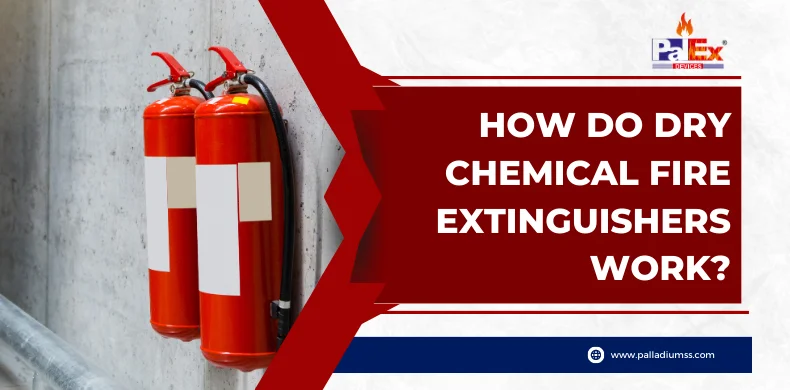When a fire breaks out, the powder does not get extinguished by the heat of the fire. Instead, it gets dispersed in the air, about 15 to 20 feet near the fire. When this powder is exposed to oxygen, it becomes a gas and quickly extinguishes the fire. As the gas blankets the surface of the fire, it causes cooling and suffocation. It absorbs all the heat from the surface of the fire. This way, it prevents oxygen from reaching the core of the fire and hence puts out any possibility of re-ignition.
Classification of Different Fires
Classification of fire into three main categories and all these different types of fires that require different approaches to extinguish them,
- Class A fires involve combustible materials like wood, paper or fabric. The most effective way to put out these kinds of fires is by using water.
- Class B fires, on the other hand, involve flammable liquids such as gasoline or oil. These kinds of fires can be extinguished by smothering them with dry chemicals or foam.
- Class C fires are electrical and occur when live electrical equipment comes in contact with combustible materials. The best way to prevent these kinds of fires is by cutting off the power supply and dousing it with water or foam.
Types of Material Used in Dry Chemical Fire Extinguishers
Many types of fire extinguishers are available in different price ranges on the market and ABC dry powder fire extinguishers and their three main types of powder used in dry chemical fire extinguishers are alumina-based, sodium bicarbonate-based, and potassium bicarbonate-based. Each type has its advantages and disadvantages, making it more or less suitable for specific applications.- Alumina-Based Powders are the most effective at fighting fires involving highly flammable liquids like oils and petrol, but they can harm some electronics.
- Sodium Bicarbonate-Based Powders are less effective against these fires, but they are much safer for use around sensitive equipment.
- Potassium Bicarbonate-Based Powders fall between the two in terms of effectiveness and safety.
Working Procedure Of Chemical Fire Extinguishers
The working procedure of chemical fire extinguishers is relatively simple. When a fire breaks out, the operator needs to point the extinguisher at the base of the fire and discharge it. The chemicals inside the extinguisher will then be released and blanket the fire’s surface, suffocating it and causing it to cool down. This prevents oxygen from reaching the core of the fire and prevents any possibility of re-ignition.
One advantage of using chemical fire extinguishers is that they are relatively safe for use around sensitive equipment. This is because they do not rely on water to extinguish fires, which could potentially damage electronics. Another advantage is that they are very effective against common types of fires, such as those involving flammable liquids or electrical equipment.
However, there are some disadvantages to using chemical fire extinguishers as well. One is that they can harm some types of electronics if misused. Another is that They can also be dangerous to operators if used in enclosed spaces, as the chemicals released can cause respiratory problems.
Advantages of Chemical Fire Extinguishers
- Chemical fire extinguishers are relatively safe for use around sensitive equipment, which is a significant advantage.
- They can also be quite effective against common fires, making them a suitable choice in many situations.
- They are generally compact and easily can be placed in different places.
- This type of extinguisher forms a spray, one of the most effective extinguishing methods, combining travelling fuel fires.
- Please have a great potential to combat temperature and lower it from 200 degrees to 60 degrees celsius.



